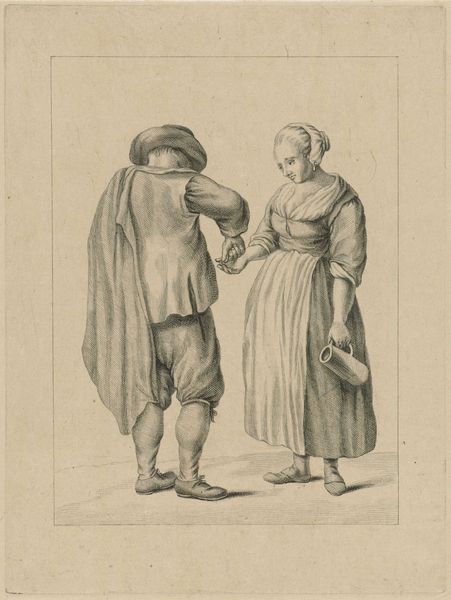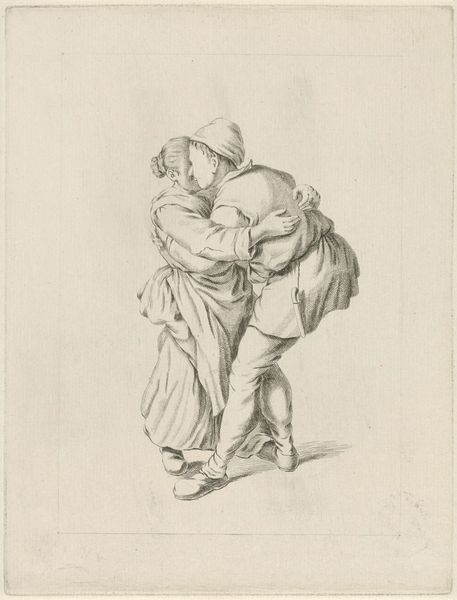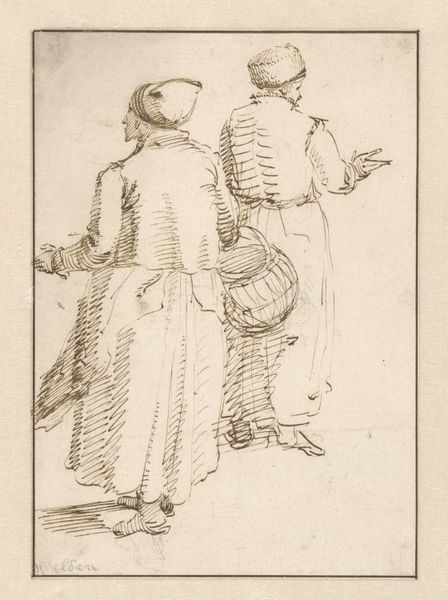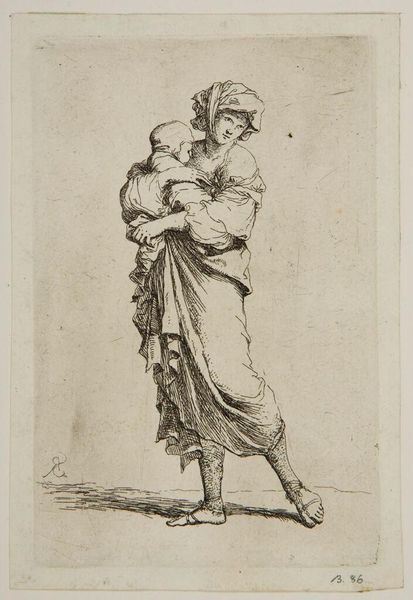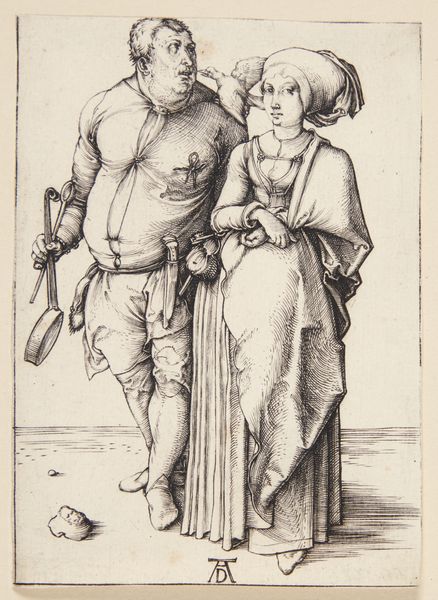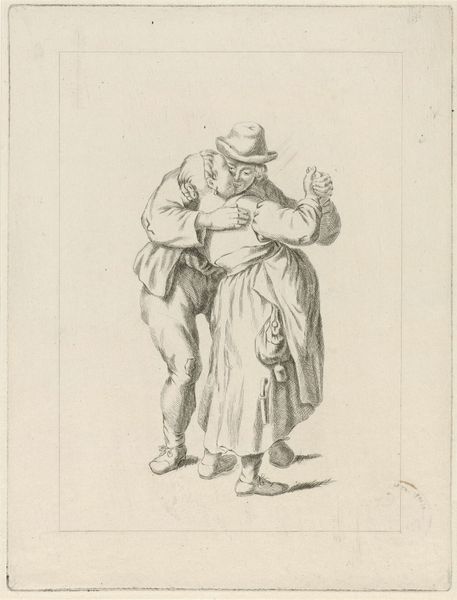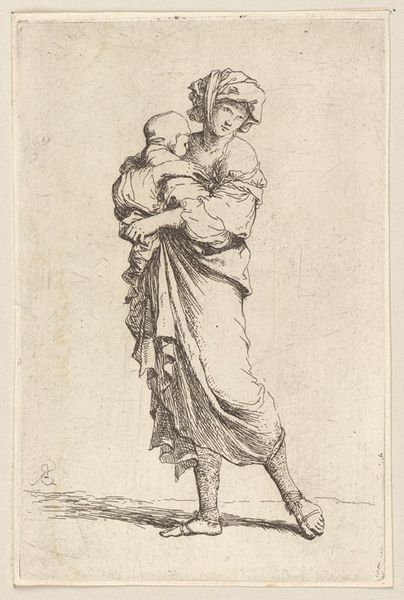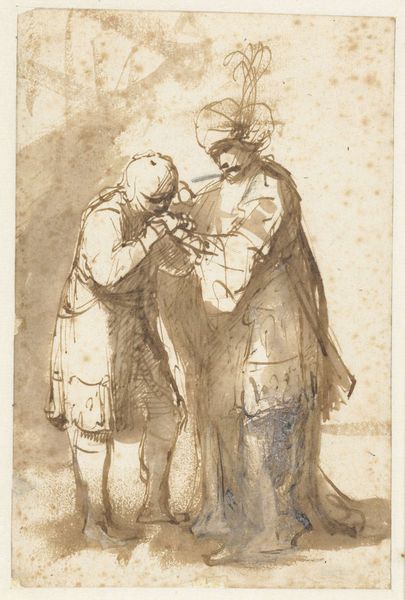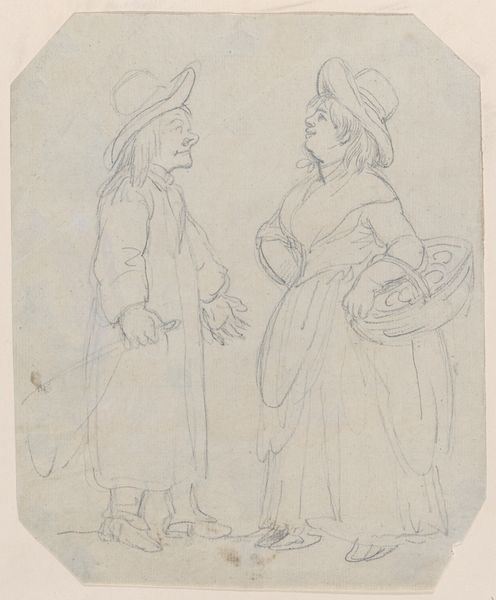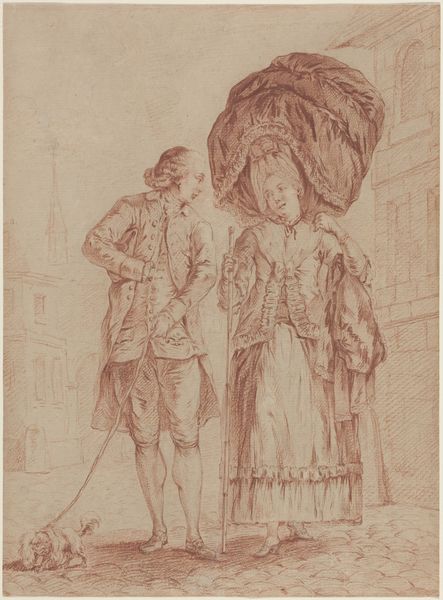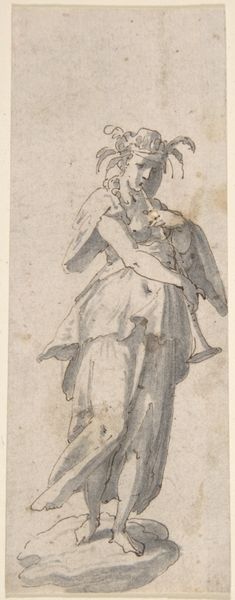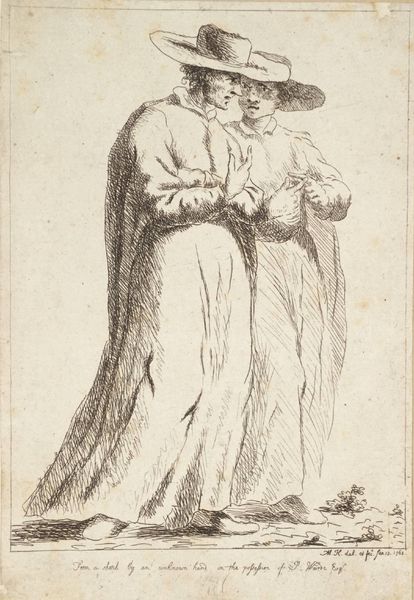
drawing, pen
#
drawing
#
charcoal drawing
#
figuration
#
pencil drawing
#
pen
#
genre-painting
#
academic-art
Dimensions: height 191 mm, width 131 mm
Copyright: Rijks Museum: Open Domain
Editor: This drawing, "A Man Pays a Woman," made by Abraham Delfos between 1741 and 1820, shows a transaction. The use of pen and ink gives it a light, almost delicate quality despite what the subject seems to be. I'm intrigued by what isn't shown, like where they are and the expressions on their faces. What jumps out at you about this image? Curator: The fascinating element here, beyond the depicted scene, is considering how economic transactions, even seemingly simple ones, were represented and viewed within the societal structures of Delfos's time. The Rijksmuseum places this under "genre painting." I wonder, where and how would such images been displayed and who formed its audience? Did it function as a moral commentary, a depiction of everyday life, or both? What do you notice about how each figure is presented? Editor: I see the man is kind of obscured from view; we mostly see his back. The woman is more visible, but she’s looking down, not engaging the viewer. That suggests perhaps they are ordinary folk. Curator: Precisely! Delfos likely created this drawing within a specific social context, perhaps reflecting or even subtly critiquing the economic and social dynamics between men and women in 18th-century Dutch society. Was Delfos commissioned for this, or was this his original artwork? And how does the composition play into its interpretation? The male figure occupies more space, but his averted face complicates our reading. Editor: I guess it gives it a layered message, prompting questions rather than offering easy answers. I'm now curious about the role of art like this in shaping or reflecting the social norms of the period. Curator: Exactly! Reflecting on the social undercurrents within such pieces allows a richer understanding, moving beyond the mere visual. Considering this historical perspective really enriches how we see the piece.
Comments
No comments
Be the first to comment and join the conversation on the ultimate creative platform.
